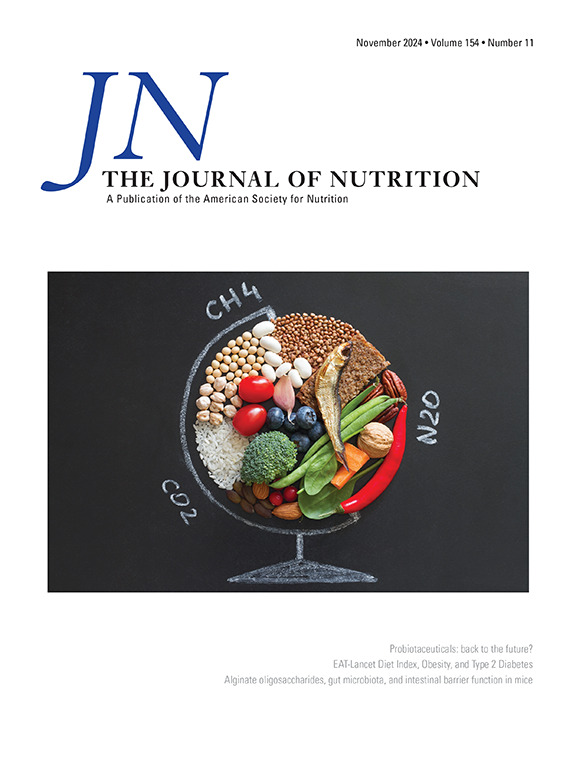“葡萄粉对大鼠氧化应激诱导的焦虑样行为、记忆障碍和高血压的影响”的撤回公告[J]中华营养杂志,2013(3):835-842。
IF 3.7
3区 医学
Q2 NUTRITION & DIETETICS
引用次数: 0
摘要
本文已被撤回:请参见爱思唯尔文章撤回政策(https://www.elsevier.com/about/policies/article-withdrawal).This),文章已应主编要求撤回。对于本文图5、图6和图7中结果的可靠性和准确性提出了质疑。值得注意的是,尽管代表了不同的条件或大脑的部分,或者它们被不当地操纵,但以下图中的蛋白质带似乎是高度相似的,如果不是完全相同的话:•图5中杏仁核和海马中的总ERK½图;•图6A中杏仁核和海马中的GLO1图。•图6A、6B中杏仁核、海马和皮层中的β-肌动蛋白图。•杏仁核和海马中的GSR1面板(图6B);•杏仁核和海马中的BDNF面板(图7C);•图7B中杏仁核和皮层的总CREB面板。通讯作者Samina Salim博士被邀请对所提出的问题作出回应,并被鼓励提供支持已发表结果的原始文件。Salim博士对JN的回应是,这篇论文是十多年前与另外两个实验室合作研究的一部分。两个实验室都因为一个负责人的去世和另一个负责人的退休而关闭了。此外,Salim博士改变了她的研究方向,她的实验室搬迁,导致了研究记录的错位或丢失。因此,她无法提供任何要求的原始图像文件。相反,她指出,如图所示,海马、杏仁核和前额皮质中相似的蛋白质表达谱是由促氧化药物治疗和多次使用相同的印迹探测和重新探测不同蛋白质引起的相似的脆弱性和对氧化应激的反应引起的。然而,JN编辑委员会(借助于图像分析软件)、征求的专家以及外部专业人士并不认为通讯作者给出的解释能够解决本文图5、图6、图7中的上述问题。考虑到对这些数据可靠性的质疑,《营养学杂志》编辑撤回了这篇文章。Salim博士因此被告知这一决定,并试图通过休斯顿大学研究部单独联系该论文的活跃作者。由于上述原因,无法建立原创文章的科学可信度。本文章由计算机程序翻译,如有差异,请以英文原文为准。
Retraction notice to ‘Grape Powder Supplementation Prevents Oxidative Stress–Induced Anxiety-Like Behavior, Memory Impairment, and High Blood Pressure in Rats’ [J Nutr 143 (2013) 835–842]
This article has been retracted: please see Elsevier Policy on Article Withdrawal (https://www.elsevier.com/about/policies/article-withdrawal).
This article has been retracted at the request of the Editor-in-Chief.
Questions have been raised regarding the reliability and accuracy of the results in Figures 5, 6 and 7 of the paper. Notably, there are concerns that the protein bands in the following panels appear to be either highly similar, if not identical, despite representing different conditions or parts of the brain or that they have been manipulated inappropriately:
- •Total ERK ½ panels in the amygdala and hippocampus in Figure 5;
- •GLO1 panels in the amygdala and hippocampus in Figure 6A
- •β-actin panels in the amygdala, hippocampus, and cortex in Figures 6A, 6B, and 7C;
- •GSR1 panels in the amygdala and hippocampus in Figure 6B;
- •BDNF panels in the amygdala and hippocampus in Figure 7C; and
- •Total CREB panels in the amygdala and cortex in Figure 7B.
The corresponding author, Dr. Samina Salim, was invited to respond to the raised concerns and encouraged to provide original files for supporting the published results. Dr. Salim has responded to JN by stating that the paper was part of a collaborative study with two other laboratories conducted more than 10 years ago. Both laboratories were shut down due to the death of one leader and the retirement of the other. In addition, Dr. Salim has changed her research directions, and her laboratory was relocated, resulting in misplaced or lost research record. Thus, she was unable to supply any of the requested original image files. Instead, she has indicated that similar protein expression profiles among the hippocampus, amygdala, and prefrontal cortex as shown in the figures were caused by their similar vulnerabilities and responses to oxidative stress induced by the pro-oxidant drug treatments and the multiple uses of the same blots for probing and re-probing different proteins.
However, the editorial board of JN (with the aid of image analysis software), solicited experts, and external professionals are not convinced that the explanations given by the corresponding author can address the above-described issues in Figures 5, 6, and 7 of the paper.
In light of the concerns affecting multiple figure panels that question the reliability of these data, The Journal of Nutrition's Editor retracts this article. Dr. Salim was informed accordingly of the decision and attempts were made to contact the active authors on the paper individually and via the University of Houston's Division of Research.
As a consequence of the above, the scientific trustworthiness of the original article cannot be established.
求助全文
通过发布文献求助,成功后即可免费获取论文全文。
去求助
来源期刊

Journal of Nutrition
医学-营养学
CiteScore
7.60
自引率
4.80%
发文量
260
审稿时长
39 days
期刊介绍:
The Journal of Nutrition (JN/J Nutr) publishes peer-reviewed original research papers covering all aspects of experimental nutrition in humans and other animal species; special articles such as reviews and biographies of prominent nutrition scientists; and issues, opinions, and commentaries on controversial issues in nutrition. Supplements are frequently published to provide extended discussion of topics of special interest.
 求助内容:
求助内容: 应助结果提醒方式:
应助结果提醒方式:


